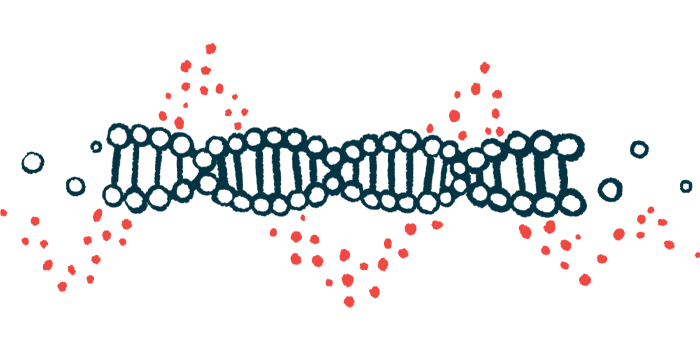Later FAP symptom onset seen with Ala97Ser mutation in China
Numbness in feet, hands is often first sign in these cases, study finds

Familial amyloid neuropathy (FAP) caused by a mutation in the TTR gene called Ala97Ser is associated with a later onset of symptoms, which most commonly involve numbness in the feet or hands.
That’s according to new data from 21 Ala97Ser-associated FAP cases in mainland China, compiled in the largest study of its kind in the country. The largest study in this region thus far, published in 2015 and comprising 28 cases, was from Taiwan. To date, this mutation has not been reported in Caucasian populations.
“Despite the lack of genetic verification, we speculate that the TTR Ala97Ser mutation originated in south mainland China,” the researchers wrote, citing these new data. The team added that this knowledge could help focus efforts for screening and prevention in the region.
Further, the team noted, the vast majority of these 21 patients — 17, or more than 80% — had been previously misdiagnosed. Given this, the researchers have now proposed a scoring system to help clinicians better diagnose FAP.
Their findings were described in “Clinical features of hereditary transthyretin amyloidosis-polyneuropathy with transthyretin Ala97Ser(p.Ala117Ser) mutation in South Mainland China,” a study published in the Orphanet Journal of Rare Diseases.
FAP is a rare progressive disease marked by damage to the peripheral nerves, or those outside the brain and spinal cord. Such damage can cause symptoms such as numbness, tingling, or other abnormal sensory experiences.
Autonomic, or involuntarily controlled, functions like digestion and blood pressure maintenance may also be disrupted among people with FAP. Other commonly involved systems include the heart, eyes, and kidneys.
Ala97Ser mutation previously seen in Taiwanese, Malaysian populations
The condition is most commonly caused by mutations in the TTR gene, which provides instructions to produce the protein transthyretin. Abnormal transthyretin can form toxic clumps, called amyloid deposits, in tissues, potentially damaging them.
Ala97Ser, among the more than 100 FAP-causing mutations described to date, is one of the more common among Taiwanese populations and ethnically Chinese Malaysians. According to the researchers, it “seems to be mainly distributed in south mainland China,” and absent among Caucasians.
In people with Ala97Ser-related FAP, symptoms tend to arise slowly and later in life.
“Due to its insidious onset, there is usually a delay in the diagnosis of this disease, which makes it difficult to treat,” the researchers wrote.
Better understanding local genetic and symptomatic patterns could help with earlier diagnosis and thereby address one of the main barriers to disease management in southern mainland China, the team noted.
To learn more about Ala97Ser-related FAP, the researchers had examined medical records from three hospitals in mainland China, including two in the south. They identified 21 adults with FAP caused by this mutation. All but three were men, and their average age at the time of symptom onset was 56.5.
Together, they represented 20 distinct families, all from south mainland China. This geographical clustering, alongside previous findings, led the team to hypothesize that this region was the origin of Ala97Ser-related FAP.
Nearly 5 years passed between symptom onset, final diagnosis
Altogether, the researchers noted, 17 of these patients were initially misdiagnosed with other diseases. Further, a mean of 4.9 years passed between symptom onset and reaching a final diagnosis.
Numbness in the upper extremities was the most common initial symptom, occurring in 15 individuals. As the disease progressed, all participants experienced paresthesia, or a burning or prickling sensation indicative of nerve damage.
Most also had muscle weakness, decreased tendon reflexes, and carpal tunnel syndrome, a condition that affects nerves in the wrist, causing finger numbness, pain, and tingling. Also, 18 people experienced symptoms of autonomic dysfunction, such as constipation, weight loss, or erectile dysfunction.
To reduce misdiagnosis and diagnostic delays like those seen in this study, the researchers developed a clinical scoring system. Based on reported symptoms and diagnostic tests, each individual received a score describing dysfunction in eight areas, including the peripheral nerves, autonomic systems, heart, gastrointestinal system, kidneys, and eyes.
Most patients showed involvement of at least one organ system other than the peripheral nervous system, with heart problems as the most common.
Our findings elucidate the clinical spectrum of [Ala97Ser-associated FAP] … in Southern China, underscoring the need for more extensive, multicentric studies to fully delineate the disease’s impact.
All patients underwent electrophysiological testing to measure how effectively nerves could conduct electrical signals. Generally, sensory nerves were more affected than motor nerves, and “nerve damage present in the lower limbs was more severe than that in the upper limbs,” the team wrote.
A total of 15 patients underwent nerve biopsies, and sample examination revealed amyloid deposits in 73.3% of these individuals. Those without positive staining for these toxic clumps might be more difficult to diagnose, according to the team.
“Our findings elucidate the clinical spectrum of [Ala97Ser-associated FAP] … in Southern China, underscoring the need for more extensive, multicentric studies to fully delineate the disease’s impact,” the researchers wrote.
Clinicians in southern mainland China may also want to pay close attention to clusters of symptoms like those reported here, which might indicate FAP, the team noted.
While this study included the largest sample of Ala97Ser-related FAP cases, it was still limited by a relatively small sample size, the researchers also noted. Additionally, because of the geographic clustering and the limited sampling in only a few areas of China, “these findings may not be representative of the rest of China or the world, thereby constraining the generalizability and precision of the results,” the team concluded.





